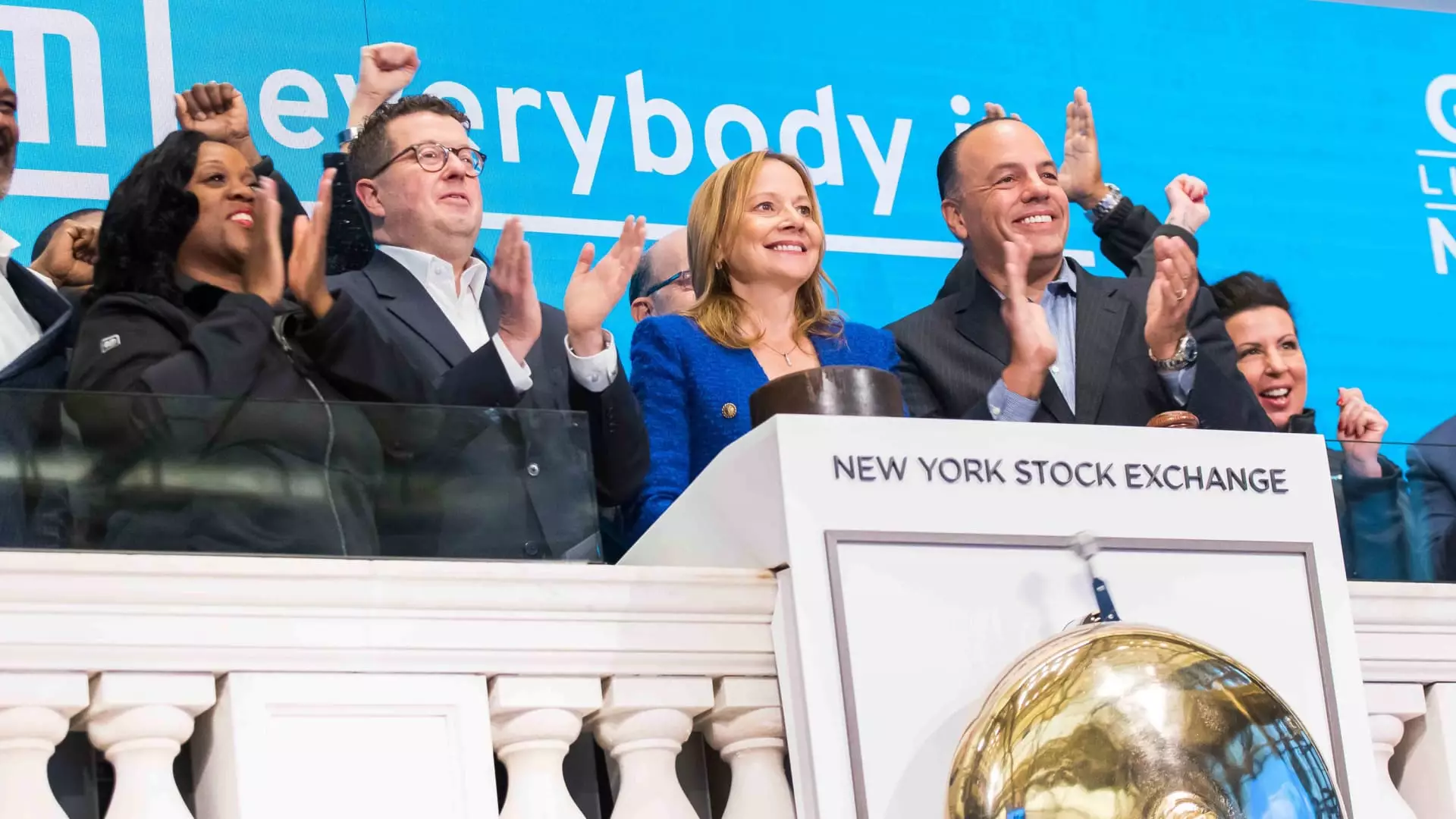In a strategic maneuver to bolster investor confidence amid competitive market challenges, General Motors (GM) has announced a significant increase in its quarterly dividend and the launch of a robust $6 billion share repurchase program. This article delves into the implications of these financial decisions, their alignment with GM’s long-term strategies, and the broader context of the automotive industry.
On Wednesday, GM revealed plans to raise its quarterly dividend by 25%, bringing it to 15 cents per share. This increase positions GM in line with competitor Ford Motor, reinforcing a sense of competition and strategic parity in an industry marked by fluctuating sales and profits. The decision to elevate dividends is particularly notable as it reflects GM’s commitment to returning capital to shareholders despite the backdrop of a sluggish market. This move is not only aimed at rewarding current investors but also at attracting potential investors, thereby bolstering the company’s stock performance.
The timing of the dividend increase is also strategic; it is anticipated to take effect with the company’s next payout announcement in April. Such well-timed financial maneuvers can significantly impact stock valuation and investor sentiment. By positioning itself alongside Ford, GM is indicating that it maintains confidence in its financial health and operational strategies despite industry-wide challenges.
Share Repurchase Program: Robust Commitment to Investors
Simultaneously, GM introduced an accelerated $6 billion stock repurchase program, of which $2 billion of buybacks is expected to occur in the second quarter. This share repurchase initiative not only underscores GM’s recognition of the current undervaluation of its stock but also demonstrates a proactive approach to managing its capital structure. Share buybacks inherently signal strong corporate health and optimism about future performance, a message that the company aims to convey in light of recent stock declines.
The execution of the buyback program, carried out by financial partners like JPMorgan and Barclays, is expected to be based on market conditions, specifically the average daily trading price of GM’s common stock. This nuanced approach ensures that the company engages in share repurchases at potentially optimal price points, thereby maximizing the return on investment for shareholders.
Contextual Challenges: Industry Sales and Regulatory Hurdles
Despite strong quarterly results that often surpass Wall Street’s expectations, GM’s shares have seen a downturn exceeding 12% in 2023. This paradox raises critical questions regarding the overall health of the automotive market, where analysts have noted stagnant sales and increasing regulatory uncertainty. Concerns surrounding tariffs and trade policies have created a risk-averse environment, making it difficult for automakers to forecast growth confidently.
GM executives, including CEO Mary Barra and CFO Paul Jacobson, have articulated a commitment to maintaining a strong balance sheet, pursuing profitable growth, and returning value to shareholders. The company’s decision to implement these capital allocation strategies seems to be a calculated response to the instability affecting the broader automotive landscape. Jacobson’s assurance of agility in adapting to public policy changes further indicates that GM is prepared to navigate these complexities while still prioritizing shareholder returns.
Looking ahead, GM has issued optimistic guidance for its financial performance through 2025, predicting net income attributable to shareholders between $11.2 billion to $12.5 billion. The projected adjusted earnings before interest and taxes (EBIT) and free cash flow figures are also promising, indicating robust operational potential. This confidence in revenue generation and profitability suggests that GM aims to leverage its market position effectively, despite current challenges.
Moreover, maintaining a commitment to share repurchases amid economic headwinds highlights GM’s long-term strategy to enhance shareholder value. By retiring more than 1 billion outstanding shares since the start of 2023, GM clearly signals a robust engineering of its capital management strategy while simultaneously striving for sustainable growth.
GM’s initiatives to increase dividends and embark on a substantial share buyback program reveal a strategic alignment with its broader financial objectives. As the company faces ongoing market challenges, these actions underscore its dedication to providing shareholder value while preparing for future growth opportunities in an evolving automotive landscape.

